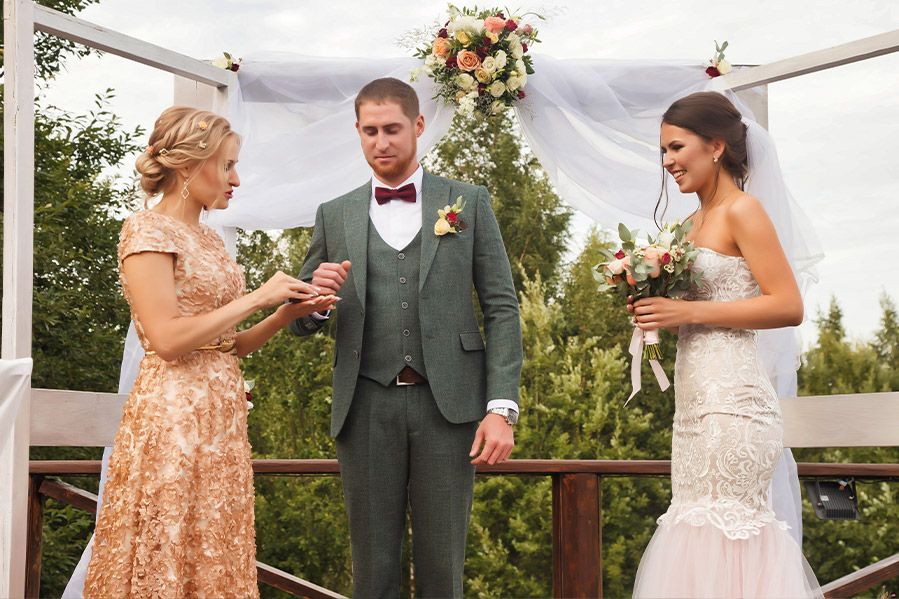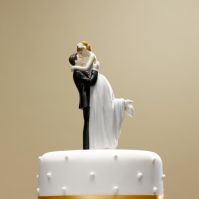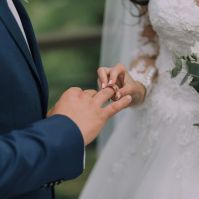
Many cultures have their own wedding traditions. Several conventions in modern wedding culture, however, come from several Irish traditions. From wedding bells and something blue to even the term ‘honeymoon’ itself, there are many wonderful and unique Irish customs associated with weddings. If you are looking to have an authentic Irish wedding, here are some Celtic traditions you can honor on your special day.
Picking the Day
If you truly want to embrace Irish traditions, you may want to begin with the month you plan on getting married. Celtic legend advises the best and worst months to arrange a wedding ceremony, which can be remembered in this traditional Irish song:
“Marry when the year is new, always loving, kind, and true.__
_ _When February birds do mate, you may wed, nor dread your fate.
If you wed when March winds blow, joy and sorrow both you'll know.__
_ _Marry in April when you can, joy for maiden and for man.__
_ _
_ _Marry in the month of May, you will surely rue the day.__
_ _Marry when June roses blow, over land and sea you'll go.__
_ _
_ _They who in July do wed, must labor always for their bread.__
_ _Whoever wed in August be, many a change are sure to see.__
_ _
_ _Marry in September's shine, your living will be rich and fine.__
_ _If in October you do marry, love will come but riches tarry.__
_ _
_ _If you wed in bleak November, only joy will come, remember.__
_ _When December's rain fall fast, marry and true love will last.”
Abiding by the counsel of this folklore, one thing is clear – be wary of May weddings! Suitable months for tying the knot include January, February, April, September, November, and December.
Speaking of knots, incorporating Celtic knots and plenty of greenery as decorations on your big day is an excellent way to keep with the Irish theme for your wedding. For the adventurous, grooms may even consider a green suit, and brides may opt for a green dress!
What to Wear
Regarding your appearance for your wedding, there are multiple Irish customs that you may observe. When you are considering your wedding dress, you want an elegant gown that makes you look exceptionally gorgeous and radiant for the big day. A wedding dress made with Irish lace is a sophisticated touch, one that many royals have incorporated into their gowns on their special day. Walk down the aisle with an air of nobility and beauty in a wedding dress made with Irish lace.
If Irish lace is not distinct enough, you will certainly be captivating in a blue wedding dress. A symbol of purity and fertility, Irish brides traditionally wore blue dresses in the days of yore. The color blue also holds another significance for Irish culture. While Ireland is mostly associated with the color green, blue was the country’s national color for the longest time, and it is still regarded as a lucky hue In Ireland.
The Ceremony
One custom that epitomizes an Irish wedding is the traditional handfasting ceremony. In this ceremony, the bride and groom stand hand in hand, their hands gently fastened with cord, ribbon, or, more specifically, a tartan with the groom’s family or clan colors. Then, the bride and groom vow themselves to one another as their family and friends gather in a circle.
In ancient times, they did not have clergy. It was this simple ceremony that bound them together as spouses. Now at modern weddings, couples who wish to honor their Celtic heritage or find the handfasting ceremony endearing themselves will have their hands bound with a tartan, ribbon, or cord as they stand before a member of the clergy who performs the actual wedding ceremony.
Good Luck at the Reception and for Your Future
The ancient Irish were particularly superstitious and went to great lengths to ensure their present and future were blessed. This is especially true for weddings. One belief was that ringing bells would avert evil spirits. Friends and family would ring “wedding bells” to offer good luck to the new couple. You can implement this Irish tradition at your wedding by providing bells for guests to ring as opposed to having them throw rice or flower petals.
Of course, after the wedding, you are probably looking forward to the honeymoon. This word also has its origins in Irish culture. When an Irish couple were married, their guests offered them a mead, or honey wine. It was thought that honey would increase fertility. Enough of this honey wine was made to last the couple the first moon cycle as Irish couples typically wed at the beginning of a new moon. As you know, ‘honeymoon’ has evolved to take on a different meaning now!



